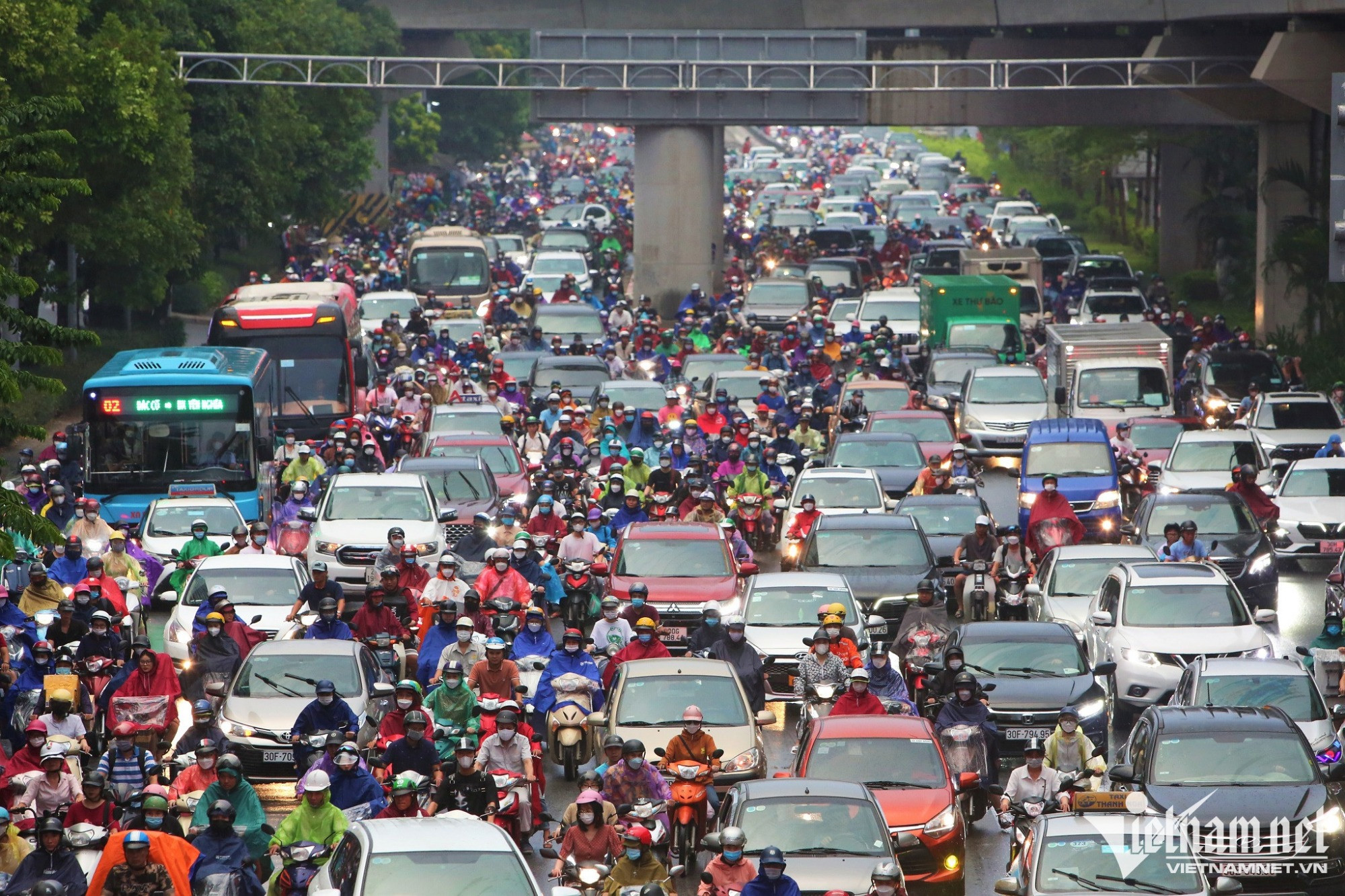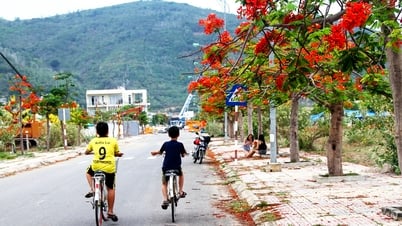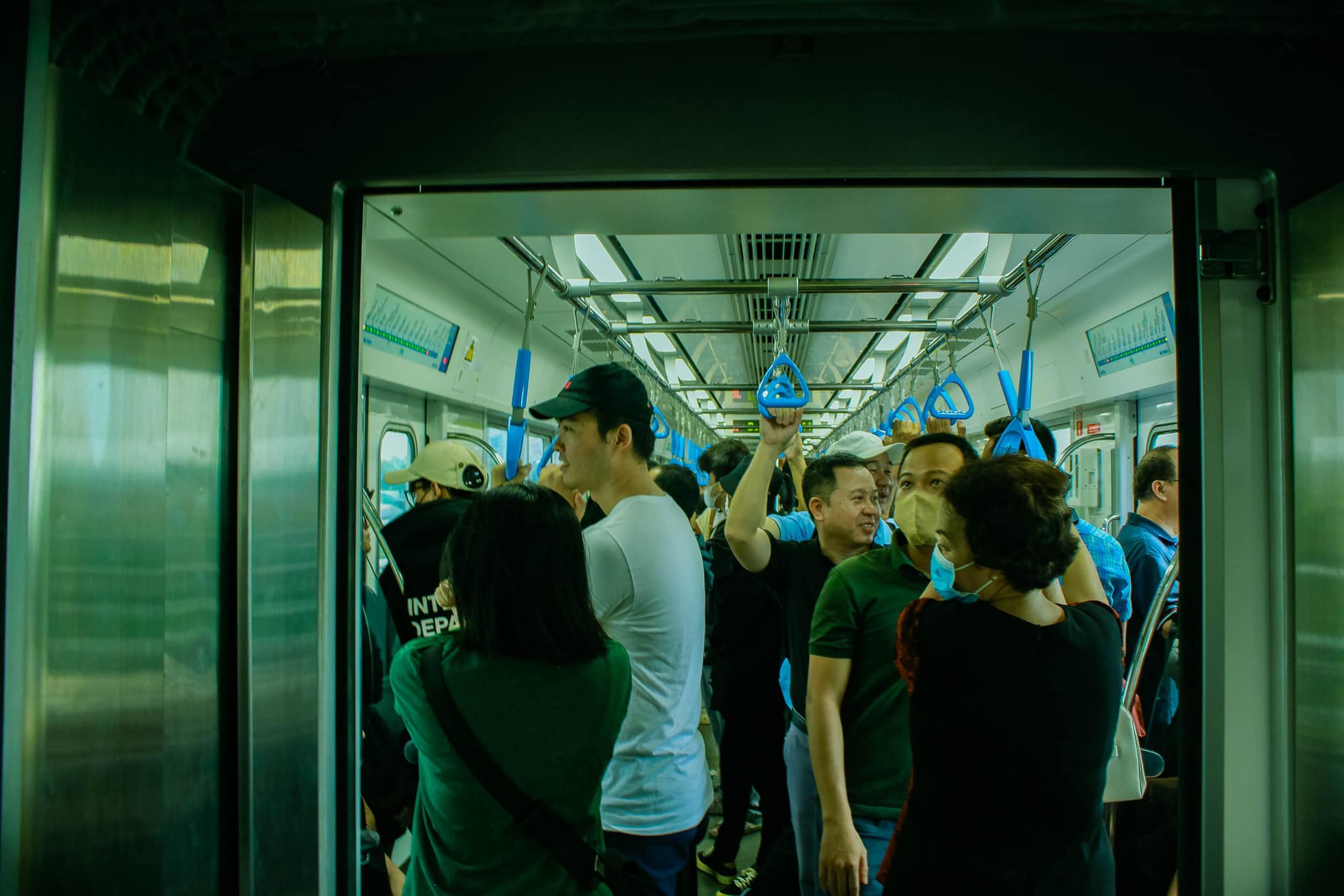The Hanoi People's Committee has just approved the project "Developing Hanoi's urban economy " from 2025, with a vision to 2030. To implement urban economic development, Hanoi has set out 33 priority tasks, projects, plans, and programs to be implemented in the period 2025-2030.
Among them, the City People's Committee assigned the Department of Transport to preside over and coordinate with relevant units to develop a project to "zone out motorbikes in accordance with the infrastructure and service capacity of the public passenger transport system, moving towards stopping motorbikes in districts by 2030".
Previously, Hanoi has repeatedly mentioned banning motorbikes from inner city areas.

Speaking with VietNamNet reporter, Dr. Nguyen Xuan Thuy, traffic expert, former Director of Traffic and Transport Publishing House, said that the issue of banning motorbikes in Hanoi has been raised for many years.
“At a previous workshop on this issue organized by the Hanoi People's Committee, experts and I said that banning motorbikes is not feasible due to many reasons,” said Dr. Nguyen Xuan Thuy.
Mr. Thuy said that currently 80% of adults ride motorbikes, of which at least 60% use them for work to support their families. "If we ban them, how will people travel and live? I think it is impossible to ban motorbikes by 2030," Mr. Thuy said.
Mr. Thuy analyzed the reasons why it is impossible to ban motorbikes: Firstly, scientifically , motorbikes are a mobile, fast, affordable means of transport for people, taking up only 1/5-1/10 of the road space compared to cars.
Second, motorbikes only cause 1/5 – 1/10 as much pollution as cars. Therefore, it cannot be said that motorbikes are the main cause of environmental pollution. In particular, motorbikes are suitable for the road conditions and infrastructure of Vietnam in general and Hanoi in particular.

Meanwhile, traffic expert, Dr. Phan Le Binh raised the question: If the demand for motorbikes shifts to public transport, will public transport be able to cope?
Mr. Binh assessed that Hanoi's public transport system, including buses, BRT, and metro, is quite strong, with a dense network and high vehicle frequency. "However, I'm afraid it is not strong enough to handle all the traffic needs from motorbikes," Mr. Binh commented.
Moreover, it is not certain that when motorbikes are banned, 100% of motorbike riders will switch to public transport, but a portion may switch to private cars.
“If this rate is high, there is a risk that even if motorbikes are banned, traffic congestion will not be reduced. Because cars take up much more space and are not as flexible as motorbikes,” Mr. Binh said.
Agreeing with this view, Dr. Nguyen Xuan Thuy predicted that if motorbikes are banned, people will compete to buy cars, and then "Hanoi will have no more space to squeeze in".
Dr. Phan Le Binh also raised another situation: When motorbikes are restricted, will the transportation of goods and food by motorbike be banned?
“Banning delivery motorbikes will cause great harm to consumer economic activities. If these types of motorbikes are allowed to operate, how can we detect motorbikes carrying people but pretending to be delivery vehicles?”, Mr. Binh raised the issue.
Therefore, both experts believe that banning motorbikes should not be discussed at this time, this option is not feasible because the time until 2030 is too short. To do this, it is necessary to develop the public transport network more reasonably, and public transport projects must be implemented more urgently and quickly.
A traffic expert said that with the 2030 milestone, Hanoi only has 7 years left to achieve the goal of banning motorbikes. Based on the actual situation of Hanoi’s public transport infrastructure, setting that milestone is unscientific and unfeasible.
Hanoi can only do this when public passenger transport meets 50% of people's travel needs.
Meanwhile, at present, the public transport system is underdeveloped, infrastructure connections are not synchronous, a series of urban railway projects are behind schedule, the bus system does not reach every corner of Hanoi... Public passenger transport only meets 10% of demand.
Source


![[Photo] National Conference "100 years of Vietnamese Revolutionary Press accompanying the glorious cause of the Party and the nation"](https://vphoto.vietnam.vn/thumb/1200x675/vietnam/resource/IMAGE/2025/5/30/1cf6cd5c8a934ebfa347028dcb08358c)

![[Photo] General Secretary To Lam receives Chief of the Central Office of the Lao People's Revolutionary Party](https://vphoto.vietnam.vn/thumb/1200x675/vietnam/resource/IMAGE/2025/5/30/140435f4b39d4599a3d17975dfb444c5)
![[Photo] Journalists moved to tears at the Memorial Service for the soldiers who died in Gac Ma](https://vphoto.vietnam.vn/thumb/1200x675/vietnam/resource/IMAGE/2025/5/30/9454613a55c54c16bf8c0efa51883456)
![[Photo] A delegation of 100 journalists from the Vietnam Journalists Association visits the soldiers and people of Truong Sa island district.](https://vphoto.vietnam.vn/thumb/1200x675/vietnam/resource/IMAGE/2025/5/30/0984a986227d4e988177f560d2e1563e)


















































































Comment (0)